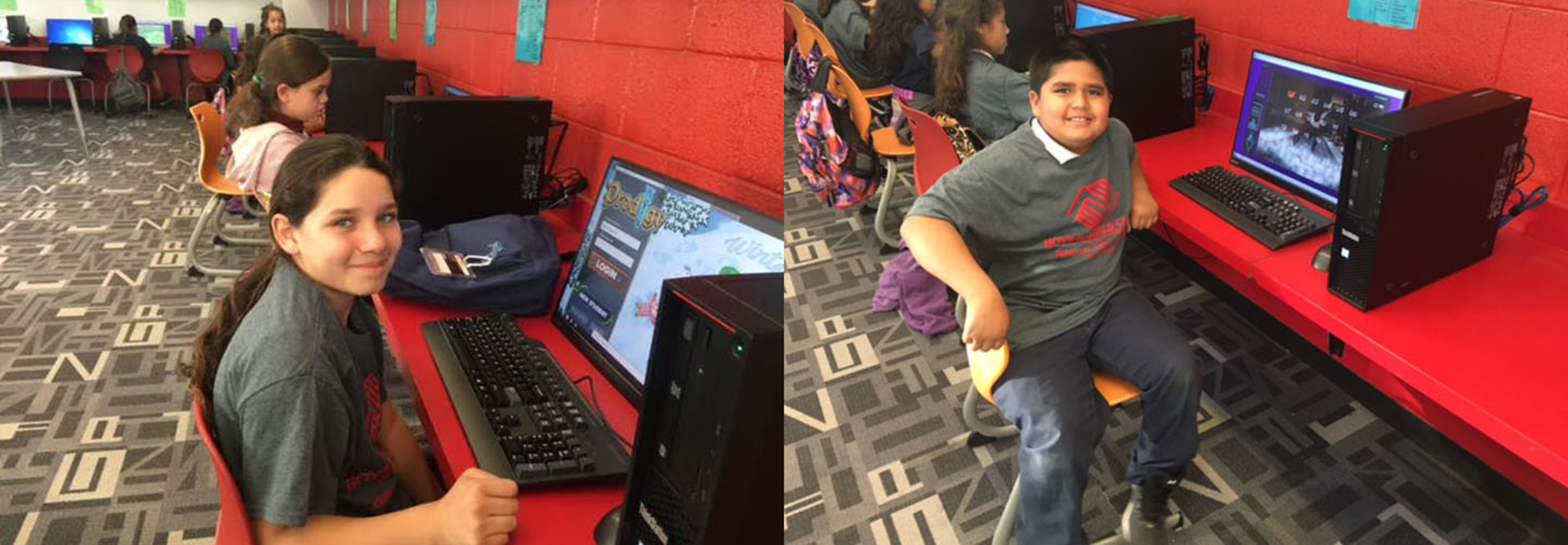Technology Donations Impact Front-End and Back-End Operations of Nonprofits
Children who come from a large family are familiar with the woes of living with hand-me-downs. The same goes for nonprofits when it comes to technology.
The Boys & Girls Club of Metro Phoenix, which offers fun and educational after-school and summer programs to local kids, had a problem: One of its locations had a server setup that consisted of an outdated, used computer that was gifted to them from a local university. And though it wasn’t ideal, they made do with it.
But now, thanks to a donation, in partnership with Lenovo and Intel, through CDW’s Tech Fore! charitable giving program, the Boys & Girls Clubs of Metro Phoenix is getting a set of brand-new servers.
“The servers for our organization are central, because it allows us to coordinate data between sites and upload data,” says Josh Stine, the club’s donor development and government relations manager. “We had a lot of issues prior to data dropping and not syncing data because our servers weren’t adequate.”
The technology donation, which included a set of Lenovo computers and servers, was announced at a Jan. 31 event in Scottsdale, Ariz., hosted by CDW. The computers, which will live in the technology center at the clubhouses, will allow the children to access the internet for homework, informal learning and communication.
“CDW is a long-term partner of ours, both in business and in charitable giving, so we were eager to join them as they launched this program,” said Sammy Kinlaw, North American channel chief, Lenovo. “It’s great to aid such a worthwhile cause and donate technology that enables volunteers to more efficiently educate the students at the Boys & Girls Clubs.”
While the ability for nonprofits to dedicate resources to technology varies depending on the size of the nonprofit, the intent and desire to do so remains. According to NTEN’s 2015 Community Survey, 20 percent of those surveyed described technology management as their primary area of interest.
“We’re very reliant on donations and public support, private support, so to have this gift to us, it puts us in a league that we couldn’t be in on our own. It’s very exciting for everybody,” says Marcia Mintz, the organization’s CEO.
Nonprofits Have Needs in Database Management, Mobile Technology and More
Teaching golf to kids might sound like fun, and it is, but it also requires serious work and resources. As part of the CDW Tech Fore! program, the First Tee — a nonprofit that was founded by the PGA, the PGA Tour, LPGA, USGA and the Masters Tournament — will be working with the Boys & Girls Clubs of Metro Phoenix to introduce kids to the game of golf through after-school programs and summer camps.
Increasingly, the First Tee of Phoenix, a chapter of the larger national organization, has seen the need for more reliance on technology.
“We’re in the transitional phase with technology as we’re just trying to keep up. That’s our hardest thing,” says Mike Tucker, director of business development for the First Tee of Phoenix. “How do we communicate? How do we manage databases? From online registration, to selectively choosing to communicate, to select segments within our membership base. All of these things are factoring into our growth strategy.”
One of the areas Tucker hopes will be implemented soon is tapping the power of mobile technology to make the registration process more frictionless.
“We can have a face-to-face with a parent that’s interested, be able to tell them about the program and get them registered on the spot without having to say ‘Take this flyer home, get online, go do this,’” he says.
In addition to efficiencies, nonprofits rely on technology for visibility and accountability, as many organizations are obligated to track and report on grant or donor spending to their funders.
“Technology is critical in everything we do. Everything we do is web-based, from our records on taking kids attendance, for tracking grants; it’s all tracked on databases, it’s all in the cloud,” says Stine. “If our servers go down, we lose that data and it’s essential to our function, not only with our kids but with our donors, the people who provide us grants.”









